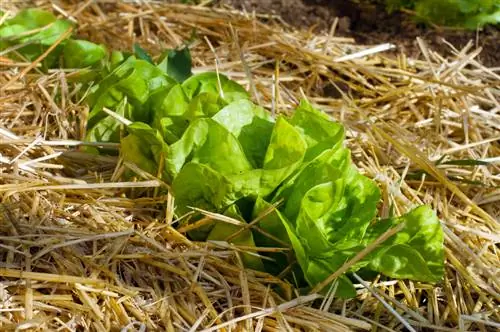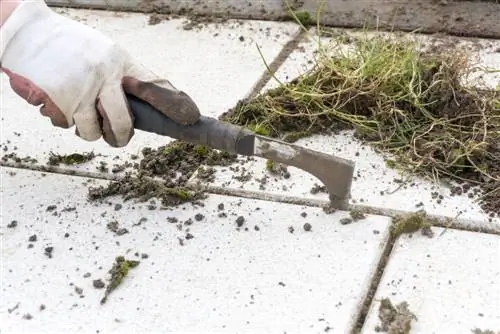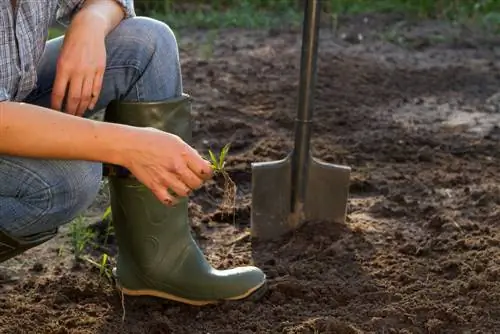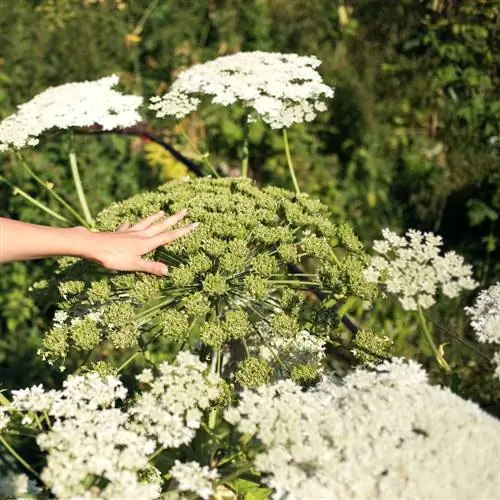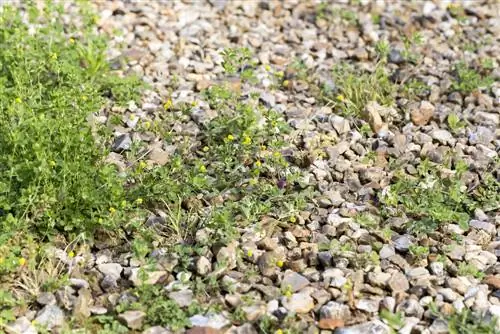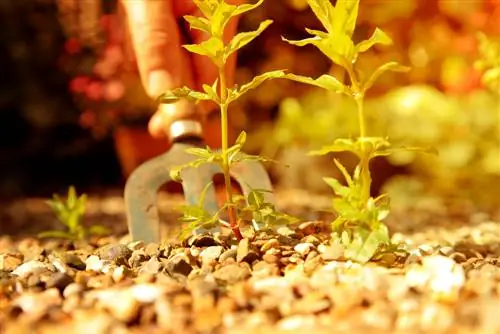- Author admin [email protected].
- Public 2023-12-25 17:45.
- Last modified 2025-06-01 06:02.
Gardening doesn't just involve planting new plants and mowing the lawn every week. Beforehand and at regular intervals, weeds that can rob other plants of nutrients must be thoroughly removed. Especially on large areas, this can be very tedious if you approach it the wrong way. With our environmentally friendly tips, the fight is guaranteed to be successful.
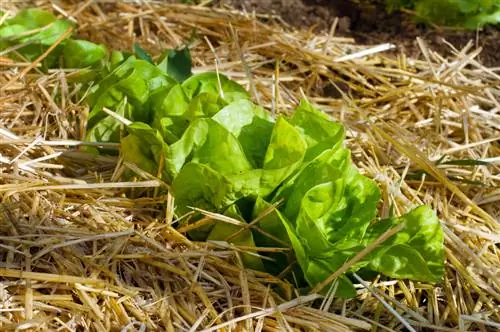
How can I remove weeds from large areas in an environmentally friendly way?
To remove weeds from large areas in an environmentally friendly way, you can dig up beds, use weed film, use mulching material or mow lawns regularly. On terraces and paths, joint scrapers and joint sand help to prevent weeds.
Tool list
For the work to go smoothly, you should have the right tools at hand:
- stable, sharp spade
- Digging fork
- Weed foil
- Mulching material
- Weeder
- Lawnmower
- Mulch paper or newspaper
- Gas burner
Dig beds carefully
If you want to create a new bed or if weeds have gained the upper hand on a bed area, you should make the effort and dig up the entire area once. In the bedgrown lawn and weed seeds you put deep underground, where everything slowly rots into humus. Root weeds, on the other hand, are carefully selected, because even the smallest root residues produce fresh greenery in these plants.
Rigolen - because twice is better
Deep digging (rigolen, deep culture) is recommended when creating new beds. The earth is dug not just one spade blade, but two spade blades deep. This means that the greenery of weeds and lawns reaches particularly deep into the ground. The weed seeds contained in the top layer also migrate downwards and can no longer sprout due to the lack of light.
Caution: You should not enter deeply loosened beds, as this will cause the laboriously loosened soil to become compacted again. Therefore, create narrow, longer beds, the middle of which you can easily reach.
Dark films do not allow the seeds to germinate
Like all plants, weeds need a lot of light to grow. If you have a little patience and don't want to plant the bed straight away, you can spread a dark tarpaulin over the ground and attach it to the corners with earth hooks or stones. As a result, the plants reliably die, rot and form a valuable mulch layer.
Weed fleece, a great helper in the fight against weeds
However, weed seeds remain able to germinate for a long time even under the film. If weeds have already proliferated, it is therefore advisable to also use special weed fleece when creating the bed.
- Cover the bed, which has been cleared of weeds and thoroughly loosened, with the fleece and secure it with plastic anchors.
- Cut a cross in the fleece in the places where you want to use plants.
- Insert the plants and place the fleece tightly around the plant again so that no weeds can sprout in this place either.
- So that the weed fleece blends in visually with the natural surroundings, you can finally cover it with a thin layer of mulch or soil.
Mulch reliably suppresses weeds
If the bed is already planted and regular weeding becomes a Sisyphean task, you can effectively suppress weeds with a layer of mulch. The following mulching materials are suitable:
- Lawn and tree trimming
- Vegetable residues
- Green manure plants
- Leaves
- Bark mulch
- Bark Compost
- Wood chips
- Miscanthus chaff (crushed miscanthus)
- Straw
- Pine bark
- River gravel or grit
The mulch layer not only has a weed-inhibiting, temperature-balancing and moisture-regulating effect. It also prevents weed seeds from germinating. In addition, the organic material decomposes slowly and enriches the soil with humus.
Cover with mulch or newspaper
Covering with newspaper or mulch also suppresses the growth and germination of weeds. Especially in vegetable beds, special mulching paper is the method of choice, which has also proven itself in commercial cultivation and on very large bed areas.
It slowly rots after about six weeks, but the weed-suppressing mulching effect lasts for about three months. The material is simply buried in the fall and forms valuable humus.
In exceptional cases you can also use newspaper. However, the paints contain heavy metals that end up in the soil when they rot. Therefore, use newspaper carefully.
Removing weeds from the lawn
If you need to remove large areas of weeds such as dandelions from your lawn, you should not simply pull them out. If some of the taproots remain in the soil, the plants will develop again and again. For this reason, dig out the roots deeply with a weed wrench. This is tedious for large areas, but it brings the desired success in the long term.
To prevent weeds from spreading in the lawn, you should mow regularly. This weakens weeds and prevents them from forming seed heads, which would cause them to spread further.
Removing weeds from patios and paths
Weeds also find the best growing conditions here, if you don't keep reaching for a joint scraper. With a gas burner these can be flamed down effortlessly and in a relatively short time. However, this only destroys the superficial greenery; the deep roots usually sprout again quickly.
In the long term, it makes more sense to first thoroughly remove all weeds from the cracks. If you then sweep these again with special joint sand to prevent weeds, weeds will no longer be able to establish themselves.
Tip
Digging is a good measure not only in the fight against weeds, but also when it comes to controlling snails. The clutches are destroyed and brought deep underground, where they inevitably die.

